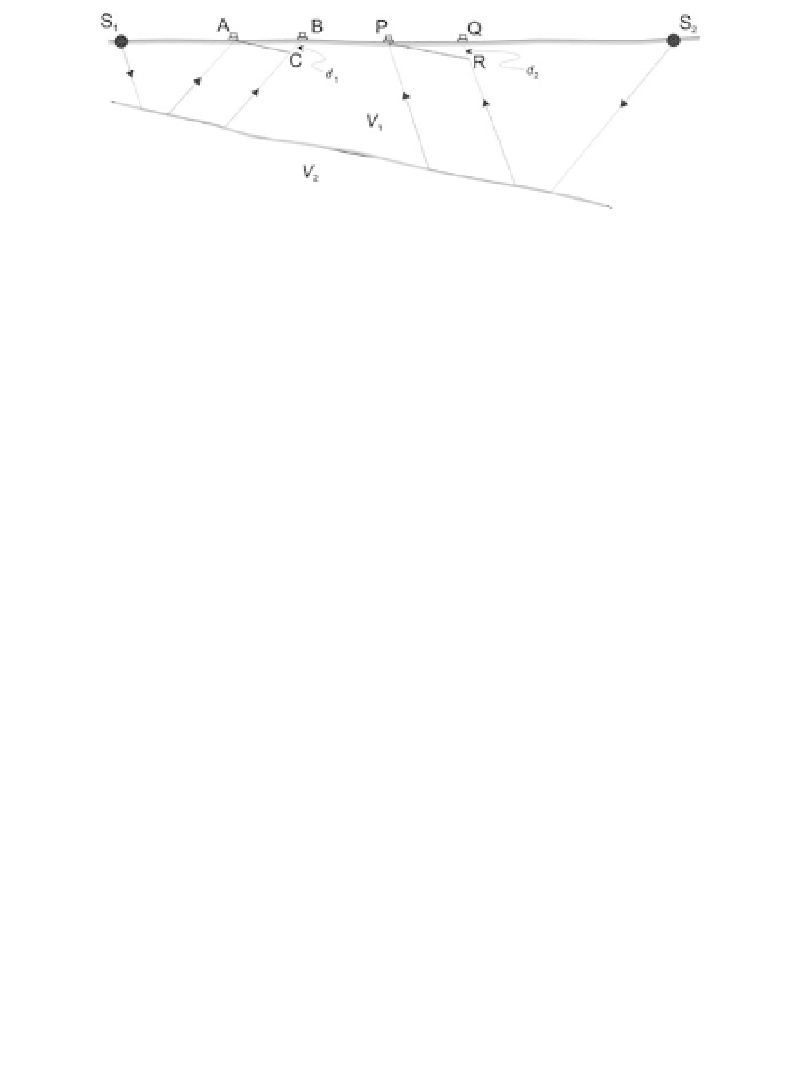Geology Reference
In-Depth Information
Figure 13.6
Refraction at a dipping interface. The refracted energy from S
1
arrives later at B than at A not only because of the greater distance travelled
along the refractor at velocity
V
2
, but also because of the extra distance
d
1
(
=
BC) travelled at the lower velocity
V
1
. On the other hand, energy from
S
2
arrives at P earlier than might have been expected, because it does not
have to travel the distance
d
2
(
=
QR) at velocity
V
1
that is needed to reach
Q from the refractor (to which the lines AC and PR are parallel).
If shots are fired from both ends of the spread, different apparent velocities
will be measured because the sign of the dip angle will differ. For dips of
less than about 10
◦
, the true velocity is given by the dip-velocity equation:
/
V
2
=
1
/
V
up
+
1
/
V
down
2
13.2.4 Refractor relief and true velocities
If, in the situation illustrated in Figure 13.6, and for each geophone, the travel
time for energy from one long shot is subtracted from the travel time for
energy from the other, the
difference line
that can be plotted will be straight
and have a slope equal to the sum of the slopes of the individual lines, i.e.
equal to 2
/
V
2
. This is a graphical expression of the dip-velocity equation.
Most refractors (apart from the water table) are irregular. If there were
only a single local depression in an otherwise flat refractor, the refracted
arrivals at geophones away from the depression would plot on straight lines
of equal slope and, as discussed above, the differences between the two
long-shot arrival times at each geophone would plot on a line with slope
2
/
V
2
. Both waves would arrive late at a geophone immediately above the
depression, and, for small dips, the delays would be similar (Figure 13.7).
The difference between the arrival times would thus be almost the same
as if no depression existed, and would plot on the straight difference-line
generated by the horizontal parts of the interface. Generalising from this
result, it follows that, for an irregular refractor and provided that all dips are
small, the time differences will still plot along a straight line with a slope
corresponding to half the refractor velocity.

